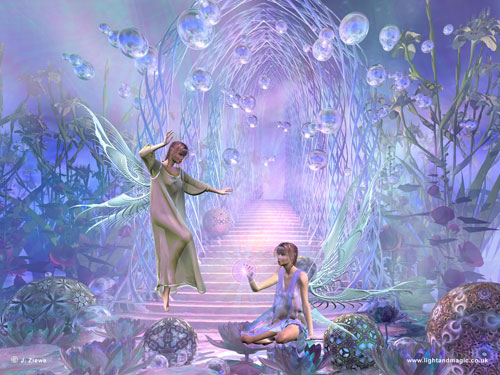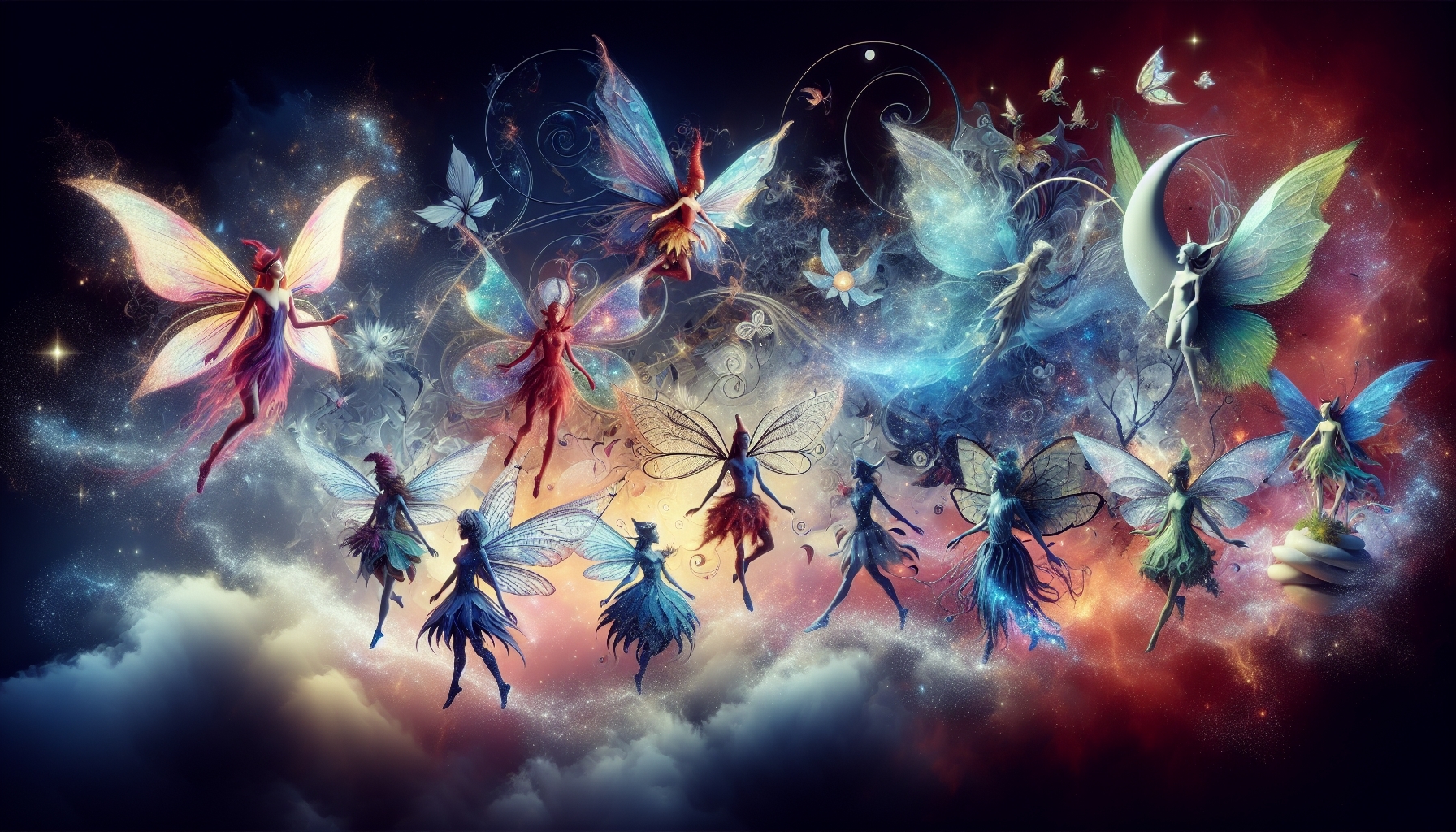Fairy Magic in Folklore and Legends

Fairy Magic in Folklore and Legends - Since early Fairy History the belief in the existence of magical fairies was real. Belief in these mythical creatures is thought to exist in almost every culture around the globe and seems to be centered around Europe and the British Isles. The first known history is based on the fae of medieval Western European folklore.
Fairy Magic in Folklore and Legends

Fairy magic, a term deeply rooted in global folklore and legends, represents a bridge between the natural world and the mystical realms.
For centuries, if not millennia, humans have been drawn to stories about the unseen world, a realm of magical beings with superhuman powers, immortal lives, and a connection with nature that goes beyond our comprehension. One of the most enduring aspects of these tales is the concept of fairy magic. Whether it is changing the course of human events, granting wishes, or simply causing mischief, fairy magic has left an indelible mark on folklore and legends worldwide. This webpage aims to pull back the enchanted veil and delve into the captivating world of fairy magic, examining how it has shaped our myths and continues to charm our imaginations.
Fairy magic, known by some as fae magic, is often associated with nature, able to manipulate the elements to create enchanting illusions, potent spells, or bewitching blessings and curses. Embodied by the fairies, these mystical creatures are seen as guardians of nature, inhabiting trees, rivers, plants, and even the air we breathe. Their magic is often seen as a representation of the unforeseen forces that shape our lives and the world around us.
Fairy Magic in Folklore and Legends
A List of Their Abilities

From the Irish Sidhe, the Icelandic Huldufólk, to the Yoruba Orishas, fairy magic is present in every culture's folklore, each rich with tales of these beings' otherworldly abilities. In Irish legends, fairies are known as magical shapeshifters, capable of transforming into animals, humans, or invisible entities. They are devious tricksters, known to lead unsuspecting humans astray with their illusions, a traditional theme known as fairy-led or pixy-led.
1. Transformation/Shapeshifting: Fairies are often depicted with the ability to transform into animals, humans, and even turn invisible at will. This is highlighted in Irish folklore where fairies are represented as magical shapeshifters.
2. Illusion Creation: Fairies can lead unsuspecting humans astray with enchanting illusions, which are employed to bewitch and mislead.
3. Influence Over Human Destiny: As seen in Shakespeare’s “A Midsummer Night’s Dream,” Oberon and Puck manipulate humans' lives using magical potions.
4. Bestowing Gifts: Fairies often give 'fairy gifts' that come with certain conditions. For instance, in the tale of Thomas the Rhymer, he receives the 'gift' of prophecy from a fairy queen, but had to serve her in the fairy realm for seven years.
5. Protection or Punishment: In some African and Caribbean folklore, fairies, seen as ancestral spirits, use their magic to guide, protect or punish the living. Their guiding hand often comes as a form of unexplainable magic in humans’ lives.
6. Blessing or Curses: Fairies can use their magic to either bless or curse humans. They can bless with 'pixie dust' symbolizing hope and wish-fulfillment, or curse with devasting effects, as seen in the tale of Sleeping Beauty.
7. Connection with Nature: As guardians of nature, fairies can manipulate natural elements in uncanny ways, exercising dominion over plants, rivers, weather, seasons, and animals.
These magical beings are often seen as capricious, whimsical creatures with mercurial temperaments, similar to nature's unpredictability. As such, their magic can bring about both good fortune and distress. They may help those who respect them and their domains, but also they can torment those who harm nature or disrespect them.
A famous example of fairy magic in English folklore is the tale of Shakespeare's "A Midsummer Night's Dream." In this story, fairy magic causes chaos among groups of mortals, with humorous yet consequential effects. Oberon, the fairy king, and his coerce Puck manipulate human destinies using magical potions, showing the power and whimsy often associated with fairy magic.
One ubiquitous element of fairy magic in folklore is the idea of 'fairy gifts.' These gifts, bestowed upon humans, often come with conditions. The Scottish tale of Thomas the Rhymer tells of a man who receives the 'gift' of prophecy from a fairy queen, but at the cost of serving her in the fairy realm for seven years.
Moreover, in some African and Caribbean legends, fairies are viewed as ancestral spirits who use their magic to guide, protect, or punish the living. These manifestations of fairy magic often tell cautionary tales about respect, loyalty, and the repercussions of one's actions.
Fairy magic extends beyond mischief, providing blessings or curses. Pixie dust, often seen in modern interpretations like Peter Pan, encapsulates the wholesomeness, hope, and wish-fulfillment aspect of fairy magic, while tales of cursed sleep, like Sleeping Beauty, symbolize its potentially harmful side.
Our fascination with fairy magic continues in contemporary literature and pop culture, with their fantasy worlds filled with mystical creatures exerting their magical influence over human events. Yet, it's beneficial to remember fairy magic as more than a plot device in fantastical tales. It serves as a metaphorical lens through which we explore our relationship with nature and our environment, the seen and unseen, and the capricious dance between boon and bane.
Fairy magic in folklore and legends continues to captivate us, underscoring our curiosity about the unseen world, the unknown, and ultimately, our place in the grand scope of existence. These stories remind us of the rich tapestry of human experience and imagination, igniting our sense of wonder, reverence, and respect for the magic that hides in every leaf, rock, and blade of grass.


